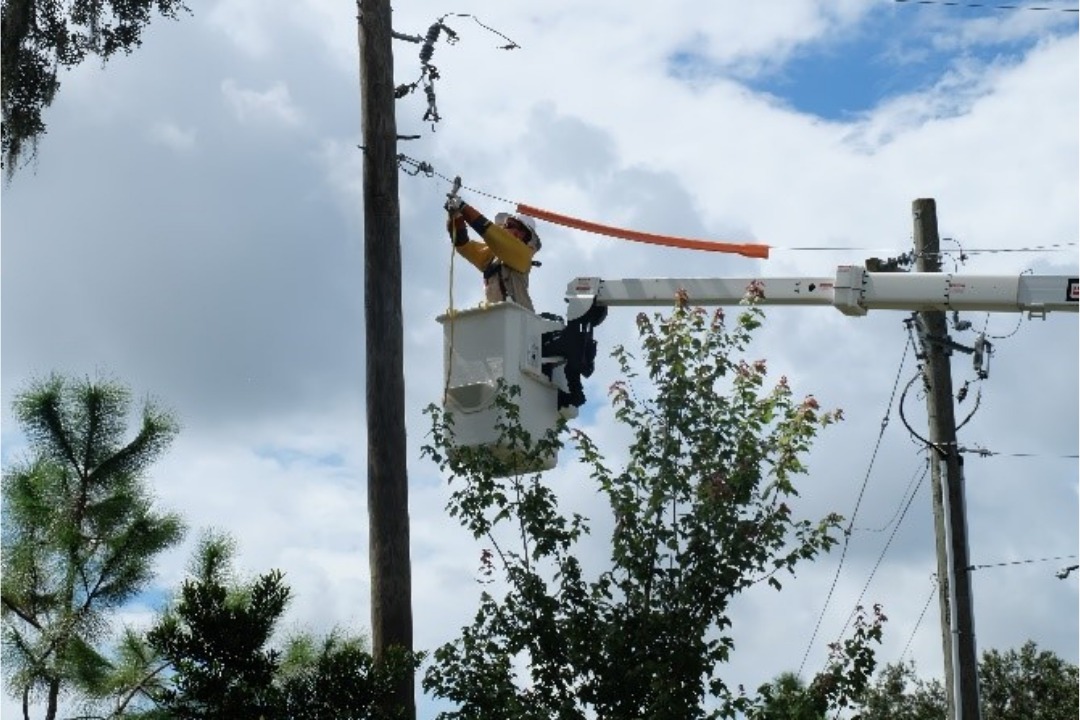
Whether it’s a love of our beautiful tree canopy or frustration at outages caused by wayward tree limbs, many customers have asked why Tampa Electric doesn’t bury the power lines. Thanks to the Storm Protection Plan, we are!
About 55% of our neighborhood lines are currently overhead, most often in well-established, legacy neighborhoods.
Our long-term Storm Protection Plan (SPP) is specifically designed to strengthen our electric grid to reduce the number of outages, the severity of outages, and the emergency costs to restore power outages caused by extreme weather. While there are many facets of the SPP, a big focus of our efforts is to bury many of those overhead lines in neighborhoods that customers so often ask about.
We spent a day in the field with one of our contractor partners currently working to bury about 100 miles of lines every year.
There are four main steps: evaluation, customer engagement, construction and restoration.
Evaluation
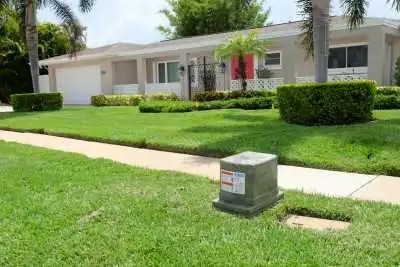 Tampa Electric uses a rigorous process to evaluate power lines to see where frequent outages occur or are likely to occur during extreme weather, where undergrounding lines are most feasible and where the work will benefit the most customers.
Tampa Electric uses a rigorous process to evaluate power lines to see where frequent outages occur or are likely to occur during extreme weather, where undergrounding lines are most feasible and where the work will benefit the most customers.
In 2020, our contractor partners began street-by-street evaluations, starting with the highest priority projects. If your street is being evaluated, you’ll receive a letter letting you know we’re taking a closer look. All contractor partners carry Tampa Electric badges and are happy to answer questions.
Each street and potential undergrounding project is unique and requires a unique plan. Our contractor partners physically walk each street to inspect the route and existing equipment. They determine where new equipment, like a transformer or above-ground handhole, like the one pictured here, would need to be placed, and how a new underground electrical line could successfully connect with the rest of the system. If the initial inspection looks promising, we’ll develop an underground design route, and our contractor partners will head back out to talk to the neighbors.
Community Engagement
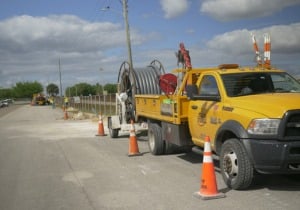 Once the street has passed the initial evaluation phase, our team will work with neighbors to finalize the route and construction plan.
Once the street has passed the initial evaluation phase, our team will work with neighbors to finalize the route and construction plan.
Anyone who has worked with a neighbor to trim back an overgrown hedge or worked with an HOA on a zoning application knows getting agreement along the whole street is a lot of work.
To provide underground service, Tampa Electric may need to place equipment above ground in your front yard, and we need to be able to access and maintain that equipment. In dense neighborhoods, finding locations to place equipment can be a challenge. In this photo you can see a truck with a large wheel of conduit that is prepared to be placed underground.
Our contractor partners work with neighbors to explain the planned route, the work that will be required and to answer questions and obtain easements where we need to place equipment.
It’s important to understand that an easement does not transfer ownership of your personal property. An easement only gives Tampa Electric the right to access our equipment for maintenance and repairs.
It can take several months to get all the easements needed to complete a project. We might host a neighborhood meeting, or our field representatives may go door-to-door to answer questions the neighborhood residents have.
If we are able to find locations for all the necessary equipment and have all the proper easements signed, the project will proceed to the construction phase.
Construction
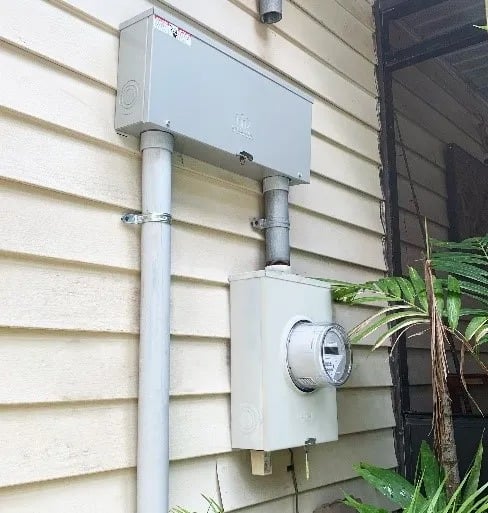 No matter how much planning you do, construction can be inconvenient. We appreciate your patience as we work to safely install new underground lines.
No matter how much planning you do, construction can be inconvenient. We appreciate your patience as we work to safely install new underground lines.
The good news is that while we can’t make the truck quieter, we can frequently use directional boring machines to minimize disruption to existing landscaping and trees. Typically, they drill at 6 feet deep to avoid other utilities and roots; however, they can go deeper, if necessary. They also have a significant range – some extend as far as 400 feet! The new underground cables need to be connected to customers’ homes. This could require a meter-base adapter, like the one pictured here, or it may need to remain overhead. Each case is unique.
Finally, when all the new equipment is installed, we can switch your service from the overhead line, to the new underground line.
Other utilities, such as internet or phone companies, share the poles. Those providers must remove their lines before poles can be removed. That can take several weeks or several months.
Poles are shared between utility providers, so sometimes the poles will come down quickly, but sometimes it takes a long time before the phone or internet provider moves their lines underground paving the way to remove the pole. We do work with the other providers to let them know where we’re working to try and expedite the process, but again, each street is unique.
Restoration
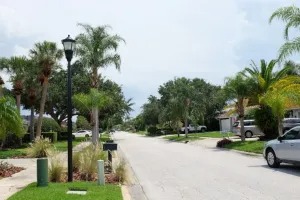 At Tampa Electric, respecting and restoring property are top priorities. After we complete our work, Tampa Electric will restore any damaged property – ensuring a stellar customer experience.
At Tampa Electric, respecting and restoring property are top priorities. After we complete our work, Tampa Electric will restore any damaged property – ensuring a stellar customer experience.
This neighborhood near the Tampa airport was recently undergrounded, and restoration work has been completed. In this neighborhood, the other utility providers have also moved their service underground, allowing the poles to be removed.
Burying overhead lines underground is a long process, but if your street is identified for this exciting program, Tampa Electric will work with you and your neighbors every step of the way. To learn more about our Storm Protection Plan and all the ways we’re working to ensure reliable energy for our customers, visit TampaElectric.com/SPP.
